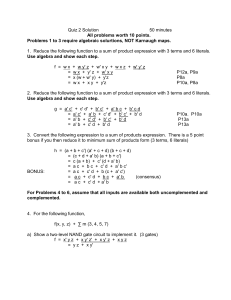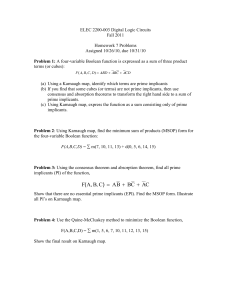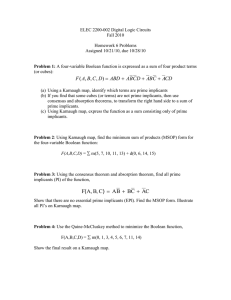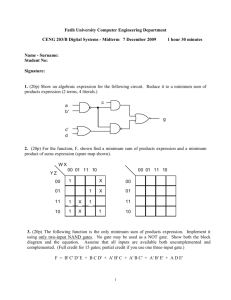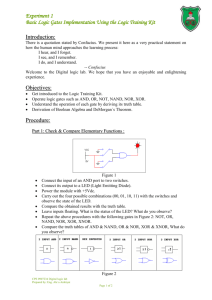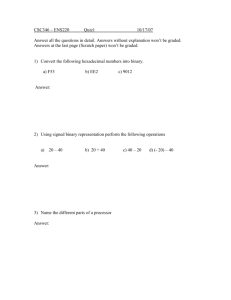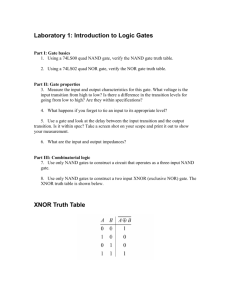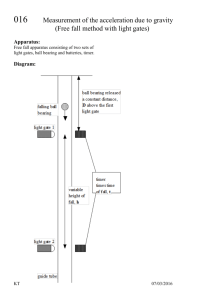Quiz 3 Solution: Boolean Algebra & Karnaugh Maps
advertisement
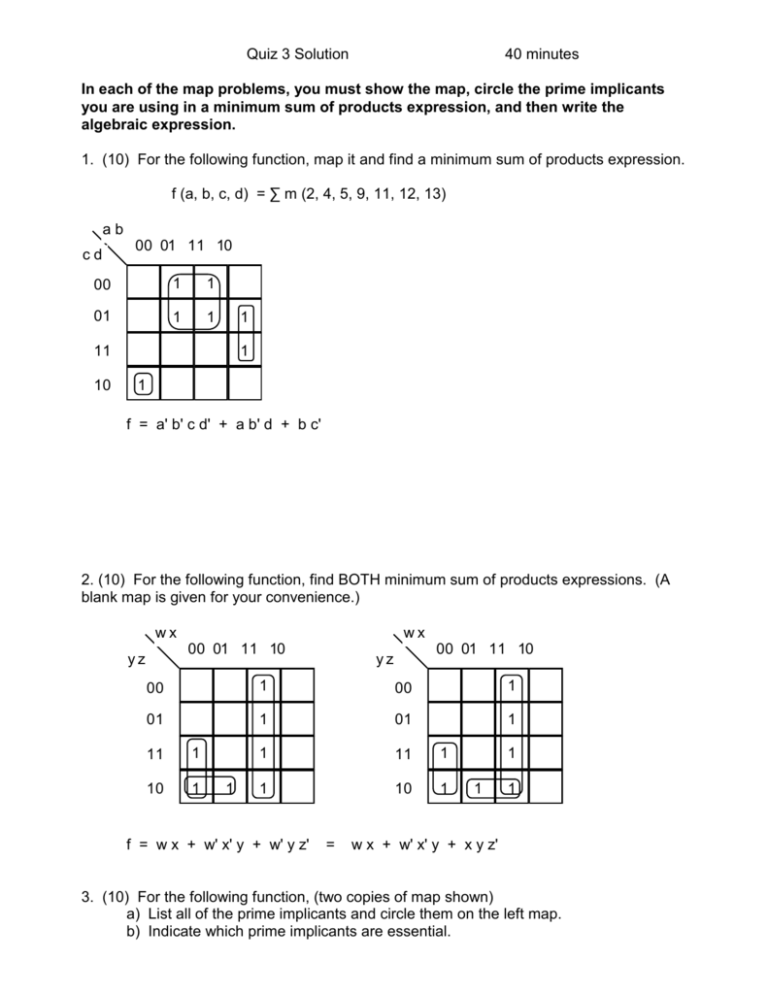
Quiz 3 Solution 40 minutes In each of the map problems, you must show the map, circle the prime implicants you are using in a minimum sum of products expression, and then write the algebraic expression. 1. (10) For the following function, map it and find a minimum sum of products expression. f (a, b, c, d) = ∑ m (2, 4, 5, 9, 11, 12, 13) ab cd 00 01 11 10 00 1 1 01 1 1 1 11 10 1 1 f = a' b' c d' + a b' d + b c' 2. (10) For the following function, find BOTH minimum sum of products expressions. (A blank map is given for your convenience.) wx wx 00 01 11 10 yz 00 01 11 10 yz 00 1 00 1 01 1 01 1 1 11 1 1 10 1 11 1 10 1 1 f = w x + w' x' y + w' y z' = 1 1 1 w x + w' x' y + x y z' 3. (10) For the following function, (two copies of map shown) a) List all of the prime implicants and circle them on the left map. b) Indicate which prime implicants are essential. c) Find the minimum sum of products expression. ab cd ab 00 01 11 10 00 1 01 1 11 10 1 1 a, b) c) cd 00 01 11 10 00 1 1 01 1 1 11 1 1 c d'* 10 abc 1 1 1 1 abd 1 1 b c' d a' b c' a' b d' f = c d' + a b d + a' b c' 4. (10) For the following function, find all 4 minimum sum of products expressions (4 copies of the map given) wx wx 00 01 11 10 yz 00 01 1 11 1 10 1 00 01 11 10 yz 1 1 1 00 1 1 1 01 1 1 11 1 10 1 1 1 1 1 1 1 1 1 1 1 1 f = x z' + x’ z + w y' + x y' + w' x' y f = x z' + x’ z + w y' + x y' + w' y z' wx yz wx 00 01 11 10 00 01 1 11 1 10 1 yz 00 01 11 10 1 1 1 00 1 1 1 01 1 1 11 1 10 1 1 1 f = x z' + x’ z + w y' + y' z + w' x' y f = x z' + x’ z + w y' + y' z + w' y z' 1 1 1 1 1 1 1 1 1 5. (10) The following function is the only minimum sum of products expression. Implement it using only two-input NAND gates. No gate may be used as a NOT gate. Show both the block diagram and the equation. Assume that all inputs are available both uncomplemented and complemented. (Full credit for 13 gates; partial credit if you use one three-input gate or 14 or 15 two-input gates.) F = A' E' + A' C' + A B C D + B' C E' + C' D' E + B' C' D = C (A B D + B' E') + C' (D' E + B' D) + A' (C' + E') = [C + (D' + B') (D + E)] [C' + (B + E') (B' + A D)] + A' (C' + E') B' E A D B B D C F C' A' D' E' C E

